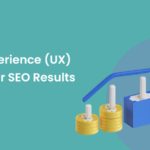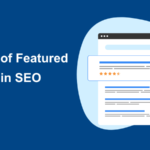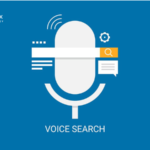While developing a website is the foremost hectic work, maintaining its online presence efficiently comes second. Your website is nothing if you cannot retain your customer’s attention. If you are a digital business owner, you must have heard about the term “bounce rate” and wondered why your visitors are leaving your website instantly.
To learn more about bounce rate in digital marketing you have to read the following guide. In this section, we will cover 7 possible reasons, explaining why your website is facing high bounce rates, and will provide some expert tips or solutions on the same.
What Exactly is a High Bounce Rate?
The bounce rate is the percentage of people leaving your website instantly visiting it or viewing the first page of the site. If it happens frequently or the percentage is higher, then it can be referred to as a high bounce rate. However, it is important to note that not all bounce rates are bad.
For instance, if visitors quickly find the information they need, like an address or contact details, and leave satisfied, a high bounce rate can indicate efficiency and effectiveness in delivering relevant information promptly. Therefore, it is crucial to understand the purpose and situations when these bounce rates are problematic.
Why Bounce Rate Matters?
Bounce rate offers crucial information about how well a website engages and draws in visitors. An increased bounce rate indicates that the users are not getting the information they need or want, thus affecting the user experience. Digital marketers or business owners use bounce rate as an indicator to identify improvement areas and enhance website functioning. By fixing the issues affecting bounce rate, business owners can improve their user engagement, drive sales, and generate leads.
7 Reasons for High Bounce Rate
Here are seven reasons that might be causing the high bounce rate and how to improve your site’s bounce rate:
1. Slow Loading Times
One of the primary reasons for a high bounce rate is slow loading times. When a website takes too long to load, visitors are likely to leave the site and move on to a faster alternative. Studies show that users expect a website to load within three seconds, and even a one-second delay can significantly increase the bounce rate. Slow loading times not only frustrate visitors but also give an impression of unprofessionalism and poor service quality. Various factors contribute to slow loading times, including unoptimized images, too many HTTP requests, server issues, and large file sizes.

Ways to Improve Loading Times:
- Compress photos to optimize them without losing quality.
- Use a Content Delivery Network (CDN) to distribute content more efficiently.
- Minimize HTTP requests by combining files such as CSS and JavaScript.
- Enable browser caching to reduce the load time for returning visitors.
- Consider upgrading your web hosting plan to ensure better performance.
2. Poor Mobile Optimization
In this digital era, mobile devices have revolutionized the world, resulting in a significant portion of web traffic. If your website is not optimized for mobile, users will have a frustrating experience, leading to a higher bounce rate. Poor mobile optimization can result in slow load times, difficult navigation, and unresponsive design elements, all of which drive users away. Investing in mobile optimization not only reduces bounce rates but also improves overall user satisfaction and engagement.
Ways to Enhance Mobile Optimization:
- Make sure your website adjusts to various screen sizes by utilizing responsive web design.
- Simplify navigation for easy use on smaller screens.
- Ensure buttons and links are easily clickable without zooming in.
- Optimize images and videos for mobile devices.
- Check the website on different mobile devices to identify issues.
3. Unattractive Design and Poor User Experience
First impressions matter, and an unattractive website design can deter visitors. If your site has an unstructured layout, difficult navigation, or outdated aesthetics, users are more likely to leave quickly, increasing the bounce rate on your website. User experience (UX) plays a vital role in retaining visitors. A well-designed website that is visually appealing and easy to navigate encourages users to explore further.
Elements, such as a clean layout, consistent color scheme, and intuitive navigation are essential for a positive user experience. Regularly updating your site’s design to keep it fresh and modern can also help maintain visitor interest and engagement.
Ways to Improve Design and UX:
- Create a modern design that attracts your target audience.
- Use a consistent color scheme and typography to enhance visual appeal.
- Ensure intuitive navigation with a clear menu and easily accessible links.
- Avoid excessive pop-ups and ads that can disrupt the user experience.
- Make sure the content is well-organized and easy to read.
4. Irrelevant or Low-Quality Content
Content is an important factor for any website, and if your website lacks relevant or high-quality content, visitors won’t find a reason to stay. Irrelevant content that doesn’t match user expectations or provides little value can increase the bounce rate. High-quality content that addresses the needs and interests of your audience is essential for keeping visitors engaged.
This includes well-researched articles, engaging multimedia, and clear, concise information that provides value to your users. Regularly updating your content to keep it fresh and relevant can also help reduce bounce rates.
Ways to Enhance Content Quality:
- Understand your audience’s needs and create content that addresses their interests and pain points.
- Use engaging headlines and subheadings to capture attention.
- Include visuals like images, infographics, and videos to make content more appealing.
- Avoid large blocks of text by using bullet points and short paragraphs.
5. Misleading Titles and Meta Descriptions
If you incorporate irrelevant titles and meta descriptions, visitors may leave immediately upon realizing the content doesn’t match their expectations. This can harm your website’s credibility and increase the bounce rate. Accurate and compelling titles and meta descriptions are crucial for setting expectations and attracting the right audience. Misleading titles that promise more than what is delivered can frustrate visitors and damage your reputation.
For Example,
Misleading Title: "10 Secrets to Making $10,000 a Day Effortlessly"
Correct Title: "Practical Tips for Increasing Your Online Income"
Misleading Description: "Discover the hidden strategies that will make you rich overnight without any hard work. Click here to learn how you can start earning $10,000 a day starting today!"
Correct Description: "Learn effective strategies for boosting your online earnings through practical and proven methods. Explore tips that can help you grow your income over time with consistent effort."
Ways to Ensure Accurate Titles and Descriptions:
- Craft clear and accurate titles that reflect the content of the page.
- Write compelling meta descriptions that provide a concise summary.
- Avoid clickbait tactics that promise more than what is delivered.
- Ensure that your content delivers on the promises made in the title and description.
- Regularly review and update titles and descriptions to maintain accuracy.
6. Excessive Advertisements
While advertisements can be a source of revenue, excessive ads can frustrate visitors and drive them away. Pop-ups, auto-playing videos, and large banner ads can negatively impact the user experience and lead to a higher bounce rate. It’s important to maintain a balance between monetizing your site and providing a positive user experience. Providing an ad-free option for premium users can also be a good strategy to reduce bounce rates while still generating revenue.

Ways to Manage Advertisements:
- Limit the number of ads on your site to avoid overwhelming visitors.
- Use non-intrusive ad formats that don’t disrupt the user experience.
- Ensure ads are relevant to your audience and blend seamlessly with your content.
- Avoid auto-playing videos and large, distracting banners.
- Consider ad-free options or premium content for users who prefer an uninterrupted experience.
7. Lack of Clear Call-to-Action (CTA)
Without a strong CTA, visitors may leave your site without taking any action, increasing the bounce rate. Effective CTAs can lead to higher engagement and conversions. It’s important to ensure that your CTAs are prominently placed, easy to understand, and relevant to the content on your site. Testing different placements and wording for your CTAs can help identify the most effective strategies for reducing bounce rates and increasing user engagement.
Ways to Create Effective CTAs:
- Place CTAs on your pages meaningfully where they are easily noticeable.
- Use action-oriented language that tells visitors what to do.
- Ensure CTAs stand out visually by using contrasting colors and bold fonts.
- Make sure the CTA is relevant to the content and user’s journey.
- Test different CTA placements and wording to find what works best.
The Final Note
Bounce rate is among a significant factor for measuring the effectiveness of your website. While components like keywords, meta tags, and backlinks play a vital role in optimizing a site, bounce rate majorly contributes to user engagement. If the percentage of visitors leaving the site is less, there is no such problem but if this percentage is higher (high bounce rate), then it should not be ignored. By addressing issues like slow loading times, poor mobile optimization, unattractive design, irrelevant content, misleading titles, excessive ads, and lack of clear CTAs, you can create a more appealing and user-friendly website.
Implementing these strategies will not only reduce your bounce rate but also enhance the overall user experience, leading to higher satisfaction and better conversion rates. To help your business gain leads by reducing your site’s bounce rate, reach out to professionals like (company name). Our expert team employs the best SEO strategies and personalizes them to your business needs.









